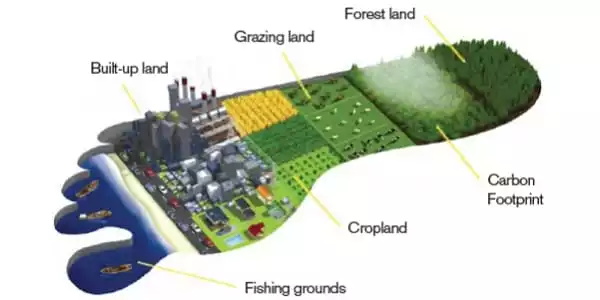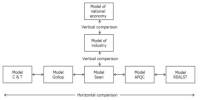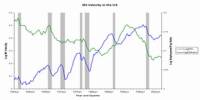The Global Footprint Network promotes the ecological footprint as a tool for measuring human demand on natural capital, i.e. the amount of nature required to support people or an economy. It is the only metric that quantifies both the amount of nature we have and the amount of nature we use. It monitors this demand using an ecological accounting system. It has become one of the most extensively used metrics of humanity’s impact on the environment, and it has been used to emphasize both the seeming unsustainable nature of existing behaviors and resource consumption disparities across and within countries.
Rather than attempting to determine how many people a given land area or the entire planet can support, the ecological footprint (EF) estimates the biologically productive land and sea area required to provide the renewable resources that a population consumes and absorb the wastes it generates using current technology and resource-management practices. The reports contrast the biologically productive area that people use for consumption with the biologically productive area that is available within a region or around the planet (biocapacity, the productive area that can regenerate what people demand from nature). In a nutshell, it measures human impact on the environment.
Footprint and biocapacity can be compared at the individual, regional, national, and global levels. Every year, the number of people, per capita consumption, production efficiency, and ecological productivity fluctuate. Global footprint assessments illustrate how large humanity’s demand is in comparison to what the Earth can regenerate. According to the Global Footprint Network, humanity has been using natural capital 1.7 times faster than Earth can renew it as of 2014, implying that humanity’s ecological footprint is equivalent to 1.7 planet Earths.

The Ecological Footprint evaluates an individual’s or a population’s demand for plant-based food and fiber goods, livestock and fish products, lumber and other forest products, space for urban infrastructure, and forest to absorb CO2 emissions from fossil fuels. On the supply side, biocapacity refers to a city, state, or nation’s biologically productive land and sea area, which includes forest areas, grazing lands, agriculture, fishing grounds, and built-up land.
Ecological footprint analysis is widely utilized in support of sustainability evaluations all around the world. It enables people to assess and manage resource consumption throughout the economy, as well as investigate the sustainability of individual lifestyles, goods and services, companies, industry sectors, neighborhoods, cities, regions, and nations.
The ecological footprint is one method of quantifying sustainability, which relates to a population’s ability to support itself in the present without jeopardizing its ability to support itself in the future. When a population can support a specific lifestyle eternally while still satisfying the demands imposed on the environment, this is referred to as environmental sustainability. Producing a quantity of pollution that the ecosystem can bear is an example of environmental sustainability.
















